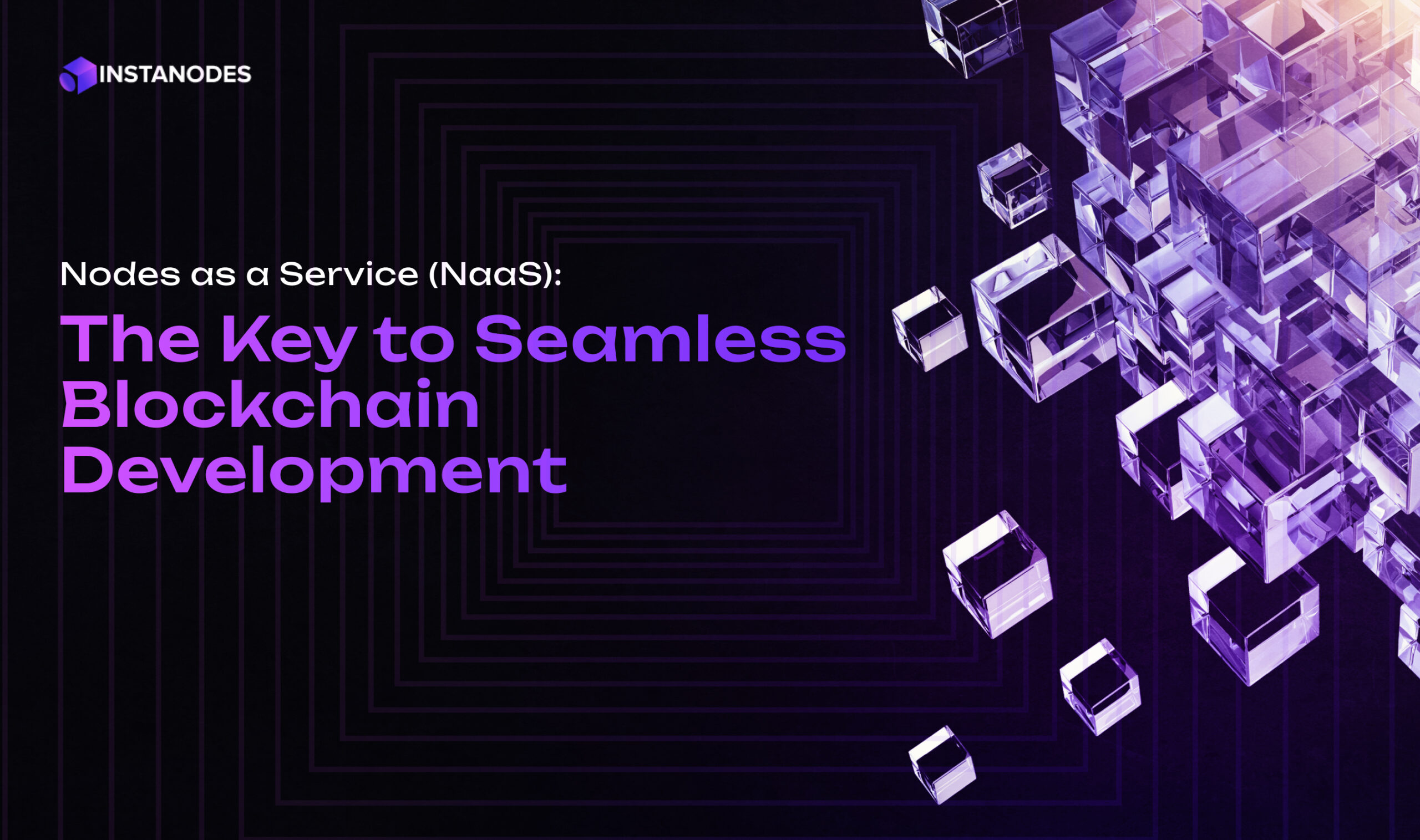Most Web3 founders are afraid of listening to the war stories about infrastructure disasters. There’s a company that lost $50,000 in trading fees when its Ethereum node crashed during a major DeFi launch. Another startup watched their user base evaporate after repeated connection failures made their NFT marketplace unusable for three consecutive days.
These aren’t freak accidents. They’re predictable outcomes when you bet your entire business on a single point of failure.
The irony hits hard as we’re building decentralized applications on centralized infrastructure. It’s like constructing a fortress with paper walls. You might look impressive from the outside, but one good push and everything crumbles.
Last year alone, infrastructure failures cost Web3 companies millions in lost revenue. Not hacks, not shutdowns of regulatory henchmen, just plain ol’ infrastructure issues that shouldn’t be a thing in 2025. Meanwhile, established players such as Uniswap and compound hardly ever have these problems because they made better infrastructure decisions early on. They are using geologically spread blockchain nodes that don’t sleep when required.
The answer is not difficult, but it means leaving the “we’ll figure it out later” approach behind that kills great startups. Smart enterprises partner with a Web3 node provider who specializes in distributed blockchain nodes. They’re treating infrastructure like a utility, which is essential, reliable, and someone else’s problem to maintain.
Your node architecture won’t make you famous, but node failures will definitely make you infamous. The question isn’t whether you’ll need bulletproof infrastructure, but whether you’ll have it before your first major crisis hits.
How Decentralized Blockchain Nodes Reduce Single Points of Failure

You might have seen too many promising projects die from easily preventable infrastructure mistakes. The pattern is always the same: rapid growth, increased load, single node failure, user exodus. It happens so often that experienced investors now ask about infrastructure redundancy during seed rounds.
Facebook’s 2021 six-hour downtime taught us something important. Even the most heavily funded companies with world-class engineers are unable to avoid catastrophic failure caused by single points of failure. The difference is that Facebook could survive six hours offline. Your startup probably can’t survive six minutes.
The majority of early-stage development teams deploy infrastructure on the basis of what is cheapest today, rather than what will keep them alive tomorrow. They spin up one cloud instance, point their frontend at it, and cross their fingers. This works fine until it doesn’t, usually at the worst possible moment.
Decentralized blockchain nodes are different. Rather than keeping your fingers crossed that nothing will break, you assume things will break and prepare accordingly:
Multiple Data Centers Spanning Continents
- Your nodes operate in different locations concurrently. When Tokyo is down, traffic automatically reroutes through Singapore and Sydney.
- Regional regulations don’t take down your entire business.
- Natural disasters are trivial inconveniences rather than business killers.
Automated Failure Detection and Recovery
- Health checks are performed on all blockchain nodes.
- Failed nodes are automatically replaced without the need for human intervention.
- Users never see individual nodes go offline.
- Load balancing ensures that no single node can get overburdened.
Integrated DDoS Protection
- Attacks are dispersed over hundreds of nodes rather than targeting a single point.
- Regular traffic keeps flowing even with large-scale attacks.
- No one chokepoint for attackers to target.
- The network becomes more resilient as more nodes are added to the system.
Seamless Network Upgrades
- New versions of the blockchain deploy smoothly to node subsets over time.
- Your app continues to function during protocol updates.
- Backward compatibility is preserved until transitions are done.
- Emergency rollbacks take minutes, not hours.
When Ethereum transitioned to proof-of-stake in September 2022, applications using single nodes experienced hours of downtime. Those using distributed infrastructure? Their users barely noticed anything had happened. The difference came down to architecture decisions made months earlier.
Decentralized Blockchain Nodes Are Essential for Boosting Security and Performance
Security in Web3 isn’t optional, it’s survival. The Poly Network hack cost $610 million. Ronin Bridge lost $625 million. These weren’t sophisticated attacks on fundamental cryptography. They were infrastructure vulnerabilities that properly distributed architecture could have prevented.
The traditional approach to security builds walls around a castle. If attackers breach the wall, they own the castle. Web3 security works differently. You assume attackers will breach some defenses and build systems that remain secure even when individual components are compromised.
Running your own nodes means becoming an expert in areas that have nothing to do with your core product. You need to understand Linux hardening, network security, key management, intrusion detection, and dozens of other specialties. Most startups don’t have this expertise, and hiring it costs more than most seed rounds.
Professional Web3 node providers have already solved these problems:
Security Through Diversity
- Various blockchain nodes operate on different hardware and software configurations.
- Universal vulnerabilities cannot compromise the entire network.
- Consensus algorithms block corrupted nodes from influencing valid information.
- Success with an attack demands compromising more independent systems simultaneously.
Enterprise-Level Security Infrastructure
- Hardware security modules secure all cryptographic processing.
- Zero-trust networking encrypts each system component’s communication.
- Ongoing monitoring alerts before a threat has time to do harm.
- Third-party firms’ annual security audits.
Performance That Actually Scales
- Content caching shortens response times by 70-90% for frequent requests.
- Geographic distribution automatically routes users to local blockchain nodes.
- Dynamic scaling allows traffic spikes without impacting performance.
- Cross-chain optimization lowers transaction fees and confirmation times.
Multi-Chain Integration Simplified
- A single API to access Ethereum, Polygon, Arbitrum, and more networks.
- Unified watch across all supported blockchains.
- Standardized integration patterns apply to various protocols.
- Adding new blockchain support without modifying your application code.
During the 2022 Solana network instability, applications using distributed node providers maintained 99.7% uptime. Those running single nodes averaged 87% uptime. The difference wasn’t luck, it was architecture.
Why a Startup Needs a Reliable Web3 Node Provider
Let me tell you about two startups I know. Both launched DeFi protocols in early 2023. Both raised similar seed rounds. Both had talented technical teams.
Startup A decided to save money by running their own Ethereum nodes. They spent four months building infrastructure, hired two DevOps engineers, and allocated 40% of their development bandwidth to infrastructure management.
Startup B partnered with a Web3 node provider from day one. They launched three months earlier, spent 90% of their development time on product features, and scaled to handle 10x more transaction volume.
Guess which one raised their Series A?
The math isn’t complicated, but founders consistently underestimate infrastructure costs:
Real Infrastructure Costs
- Hardware and colocation: $100,000-$300,000 initial investment
- Operational expenses: $20,000-$80,000 monthly for enterprise-grade setup
- DevOps talent: $200,000-$450,000 annually per senior infrastructure engineer
- Opportunity cost: 6-12 months delayed launch while competitors gain market share
- Alternative: Web3 node provider offers diverse plans for users, based on actual usage.
The Expertise Issue
- Blockchain protocols evolve continuously, keeping up needs specialists full-time.
- Security best practices vary significantly from mainstream web development.
- 24/7 operation necessitates several engineers in various time zones.
- Performance optimization requires in-depth knowledge of several blockchain networks.
Time-to-Market Reality
- Professional vendors roll out production-ready infrastructure within 24-48 hours
- From scratch, typically takes 4-6 months before seeing actual traffic
- Web3 market windows have a short closing time, which usually leads to success.
- Each week invested in infrastructure is a week not invested in user experience.
Investor Expectations
- Due diligence these days entails infrastructure reliability tests.
- Institutional buyers demand uptime guarantees and compliance certifications.
- Leasing from well-established Web3 node providers indicates technical maturity.
- Infrastructure crashes during fundraising demos kill deals in an instant.
Compliance Gets Complex
- GDPR requires specific data handling procedures across European nodes.
- Financial regulations vary by jurisdiction and change frequently.
- Professional providers maintain current certifications across multiple frameworks.
Scaling Challenges
- Traffic can increase 50x during market volatility or viral adoption.
- Geographic expansion requires local infrastructure in new regions.
- Multi-chain support becomes essential as DeFi evolves.
- Performance optimization requires constant monitoring and adjustment.
The Terra Luna collapse demonstrated this perfectly. Applications using reliable Web3 node providers maintained functionality during extreme trading volumes and network congestion. Those running their own infrastructure crashed when they needed to work most.
Infrastructure isn’t glamorous, but it’s the difference between surviving your first success and becoming another cautionary tale.
Conclusion
The Web3 infrastructure game has changed. Users now expect traditional web performance with blockchain functionality. Investors scrutinize infrastructure decisions as carefully as tokenomics. Those using decentralized blockchain nodes are not afraid of losing their business and scale smoother.
Even talented developers with innovative ideas may fail if they treat infrastructure non-seriously. Their applications may work fine with 100 users but crumble under real load. There are examples of less technically impressive projects that succeeded because they could handle growth when it arrived.
The successful Web3 companies like Chainlink, Polygon, and The Graph didn’t waste time reinventing infrastructure. They focused on their core innovations while leveraging professional-grade distributed systems. Their infrastructure providers became invisible enablers of visible success.
The numbers tell the story:
- Startups using Web3 node providers launch 85% faster than DIY approaches.
- Infrastructure costs drop 60-80% during critical growth phases.
- Uptime improves from 90-95% to 99.9%+ with professional providers.
- Zero infrastructure-related delays during fundraising processes.
But the real advantage isn’t financial, it’s strategic focus. Every hour debugging node connectivity is an hour not spent on user experience. Every dollar invested in redundant infrastructure is a dollar not invested in product development or user acquisition.




